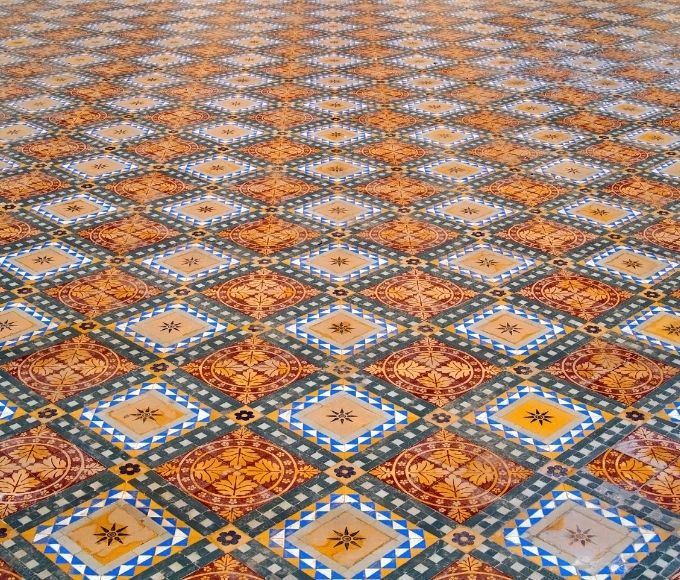

Specialist Tilers in Dublin
Home FLOOR & TILING

Tilers in Dublin who are experts in their field
OS Holding tilers complete wall and floor tiling projects for homeowners as well as large and small construction companies. We can assist with any size tiling project, including kitchen splashbacks, shower enclosures, fully tiled bathrooms, and large floors, and we are experts in tiling over heated screeds. We can also handle much larger commercial tiling projects.
Dublin Commercial Tiling Contractors
OS Holding carries out commercial tiling projects on a regular basis and has recently completed new projects in Dublin. Along with homeowners, we collaborate with specialist office fit out contractors, shopfitting teams, and building contractors throughout Dublin.
Tiling Services We Offer
Our skilled wall and floor tilers are fully capable of completing small, medium, and large-scale projects on time. Other tiling services we provide include underfloor heating installation, surface preparation, grouting, silicone sealant, and more.
Note: Beside using OsHolding as your trusted Builders in Dublin, you can also get benefits from combining Floor & Tiling with Attic Conversion, House Renovations, House Extensions, Kitchen Refurbishments, Bathroom Refurbishment, Painting & Decorating, Bricklaying and House insulation Services. Also you can check our previous works in Gallery & Read about OsHolding Company or Simply contact us.
Frequently Asked Questions
Can you apply new tiles over existing ones?
Yes, but there are a few things to consider first. Before agreeing to this method, a professional tiler will assess whether the walls are strong enough to support the extra weight and whether the existing tiling is well bonded to your walls or floor.
What caused my grout to crack or come loose?
This indicates that the floor preparation was not done correctly. It’s a common occurrence that can be avoided by hiring a reputable tiler. Floors must be solid before tiling can begin, so make sure your floorboards are screwed down, then apply a layer of cement board over the floorboards and screw every six inches in all directions. Then, to allow for expansion in the timber below, a decoupling membrane should be added. Then, over the top, tiling can begin. Remember that if you can see or hear it moving (creaking), it is not suitable for tiling.
Which are the most durable?
Porcelain tiles are extremely durable and are especially well suited for floor tiling. Over the last ten years or so, they have become the most popular option. They are difficult to cut and drill, but any experienced tiler will have the necessary tools.
Are tiles appropriate for exterior tiling?
Yes, but keep in mind that they will be exposed to the elements and must be non-slip. I would always recommend a high-quality porcelain tile because they are extremely durable and come in a variety of non-slip finishes.
Why do my walls and floor make a hollow sound when I tap them?
This is due to poor installation; tiles should only be fitted to a solid bed of adhesive; dabbing a blob of adhesive onto the corners of the tile and pressing it against the walls or floor is not acceptable. To ensure even coverage beneath the surface, your tiler should apply adhesive with a notched trowel.
Is a decoupling membrane, such as Ditra or Durabase, required when fixing onto heated screeds?
Yes, heated screeds should be turned on two weeks before tiling to allow for any cracks to appear. Heated screeds shrink and expand slightly during hot and cold cycles, so you’ll need to use a decoupling membrane to compensate. These can significantly increase the cost of your tiling but are absolutely necessary for this process.
How do I figure out how many square metres there are in a square metre?
Tiles for walls and floors are typically measured in square metres (M2) One square metre is equal to one metre in length and one metre in width. If you’re tiling a wall that’s 2.4 metres high by 2 metres wide, multiply it by 2.4 to get 4.8m2. Repeat this for each wall or floor you’re tiling, and add 15% to the total to account for waste and off cuts. This will usually provide you with enough tiles to complete the job. Use our tile calculator to figure out how many tiles you’ll need.
Is it possible to cut out and replace a broken tile?
Yes, absolutely. It is fairly simple to remove a broken or chipped tile and replace it with a new one. You’ll need a replacement tile first, which can be difficult if you don’t have one left over from the original job. Then, using a hammer, carefully smash the broken tile and remove the pieces with an old chisel, being careful not to damage the good tiles surrounding it.
Is it possible to tile directly onto the floorboards?
Natural stone, such as slate, marble, travertine, and limestone, must be cut on a wet cutting machine rather than a standard score and snap tile cutter, which takes much longer and must be done outside. They must also be sealed before and after grouting, which adds time to the job.